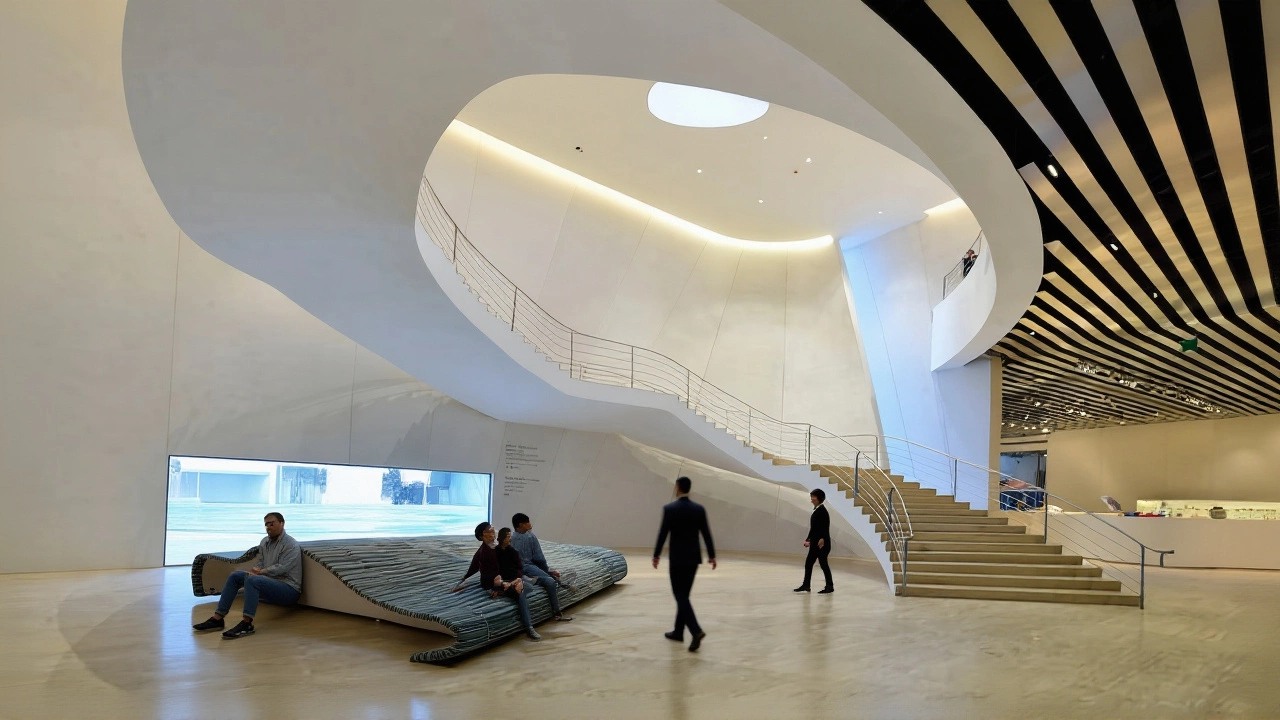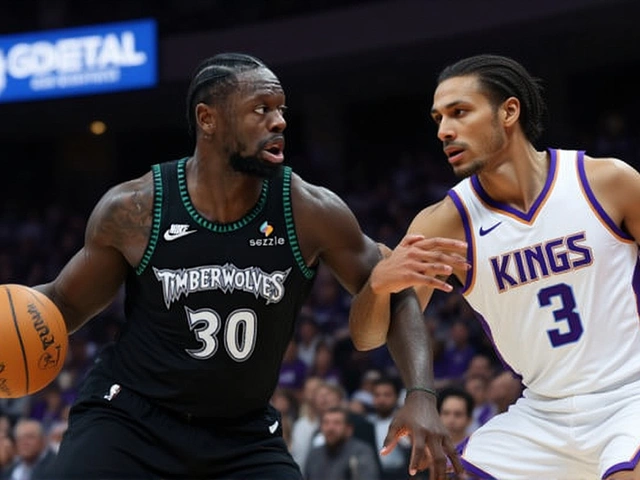When Agustín Arteaga, director of Museo Nacional de Arte was announced as the new Eugene McDermott Director of the Dallas Museum of Art on July 14, 2016, the art world took note. The appointment, effective September 2016, signaled a strategic push to deepen the museum’s ties with the city’s fast‑growing Latino community and to elevate its already impressive Mexican art holdings. The news broke in the Dallas Morning NewsDallas, Texas, and it still feels like a turning point for North Texas cultural institutions.
- Arteaga’s tenure begins September 2016.
- DMA’s collection totals over 24,000 works, spanning pre‑Columbian to contemporary art.
- Key Mexican pieces include Diego Rivera’s self‑portrait, two Frida Kahlo self‑portraits (on loan), and Miguel Covarrubias’s mosaic “Genesis.”
- Dallas’s Latino population grew 25 % between 2010 and 2020, now representing more than 20 % of the metro area.
- The appointment follows a series of Latino leadership moves at U.S. museums, such as in Kansas City and Phoenix.
Background: Arteaga’s Career and MUNAL’s Rise
Born in Madrid and raised in Mexico City, Arteaga earned a Ph.D. in modern art, focusing on the interplay between Mexican muralists and post‑war American pop culture. Before steering MUNAL from 2010 to 2016, he launched the Museo de Arte Latinoamericano in Buenos Aires, curating groundbreaking shows on Andy Warhol, Roy Lichtenstein, and Diego Rivera. According to a 2015 interview, he described his mission at MUNAL as “making Mexican modernism a global conversation, not a regional footnote.”
During his tenure, MUNAL’s attendance climbed 18 % and its collection of 19th‑century Mexican paintings doubled, thanks to Arteaga’s knack for high‑profile loans and blockbuster exhibitions. His success attracted the attention of the Dallas Museum’s board, which had been scouting a director who could bridge the museum’s strong European and American holdings with its under‑tapped Latin American assets.
The Appointment and Its Significance
The decision to bring Arteaga to Dallas was announced at a press conference held at the museum’s Arts District headquarters. Board chair Marilyn Cardenas said, “Agustín’s expertise in modern Mexican art and his experience building international partnerships align perfectly with our goal to become a leading hub for Latin American culture in the United States.”
Replacing Maxwell Anderson, who left in late 2015 for the New Cities Foundation, Arteaga becomes only the second Latino director of a major U.S. museum of Dallas’s size. The move echoes the Dallas Symphony Orchestra’s 1977 hiring of Eduardo Mata, a moment many locals still cite as a watershed for Latino representation in the city’s cultural elite.
Dallas Museum of Art’s Mexican Collection: Foundations and Opportunities
The DMA’s Mexican holdings have long been a point of pride. Its pre‑Columbian ceramics, valued at roughly $12 million, draw scholars from Harvard and the Universidad Nacional Autónoma de México. The museum’s centerpiece, Covarrubias’s “Genesis” mosaic, greets visitors in the main lobby, while Rivera’s self‑portrait hangs in the modern wing. As Arteaga noted in his introductory remarks, “These works are a conversation starter. We can now build entire programs that explore the dialogues between Mexican modernism and the broader modern art narrative.”
Statistically, Mexican works constitute about 8 % of the museum’s total 24,000‑piece inventory, but they attract 15 % of the annual attendance among visitors of Hispanic heritage—a clear sign of untapped potential. Arteaga plans to expand the collection by targeting key pieces from the 1930s Mexican mural movement, leveraging his network at MUNAL and the National Institute of Fine Arts in Mexico.

Community Impact and Latino Representation
Dallas’s Latino community, now over 1.2 million people, has long advocated for more inclusive programming. Community leader Luis Hernández of the Latino Cultural Alliance said, “Seeing a Mexican art director at the DMA tells our kids that their heritage matters here, too. It’s more than a symbol; it’s a promise of relevance.”
In response, the museum has already scheduled a series of bilingual tours, a pop‑up gallery in the historic West End, and a collaborative exhibition with the Instituto Nacional de Bellas Artes slated for spring 2017. These initiatives aim to increase Latino visitation by at least 10 % within the first year, according to a market‑research report commissioned by the DMA.
Future Directions: Programming, Partnerships, and Global Reach
Looking ahead, Arteaga envisions three pillars for the DMA: (1) expanding the museum’s modern Latin American collection, (2) strengthening cross‑border collaborations with institutions like MUNAL, the Museo Nacional de Antropología in Mexico City, and the Museum of Modern Art in Buenos Aires, and (3) launching an interdisciplinary research center focused on Latin American visual culture.
He also hinted at a potential partnership with the UNESCO World Heritage Committee to host traveling exhibitions on pre‑Columbian heritage, a move that could attract international scholars and tourists alike. If successful, Dallas could rival Mexico City’s Reforma district as a hub for Latin American art in North America.
Frequently Asked Questions
How does Arteaga’s appointment affect Dallas’s Latino community?
The new director brings cultural relevance and representation to a community that makes up over 20 % of the metro area. Planned bilingual programs and community‑centered exhibitions aim to boost Latino museum attendance by roughly 10 % in the first year.
What are the major Mexican works already in the DMA’s collection?
Key pieces include Diego Rivera’s self‑portrait (1932), two Frida Kahlo self‑portraits on loan from the Museo de Arte Moderno, and Miguel Covarrubias’s large entrance mosaic “Genesis,” plus a robust pre‑Columbian ceramic collection valued at around $12 million.
What experience does Arteaga bring to the Dallas Museum?
Before joining the DMA, Arteaga directed Mexico’s Museo Nacional de Arte, founded the Museo de Arte Latinoamericano in Buenos Aires, and curated landmark exhibitions on Warhol, Lichtenstein, and Rivera. His scholarly background includes a Ph.D. focused on modern art theory.
Will the DMA acquire more Mexican art under Arteaga?
Yes. Arteaga intends to prioritize acquisitions from the 1930s Mexican mural movement and seeks partnerships with Mexican institutions to secure long‑term loans, aiming to increase Mexican works from 8 % to roughly 12 % of the overall collection within five years.
What broader impact could this leadership change have on U.S. museums?
Arteaga’s appointment may encourage other major institutions to consider Latino leaders who can bridge North American and Latin American art worlds, potentially leading to more inclusive programming and diversified boardrooms across the country.




